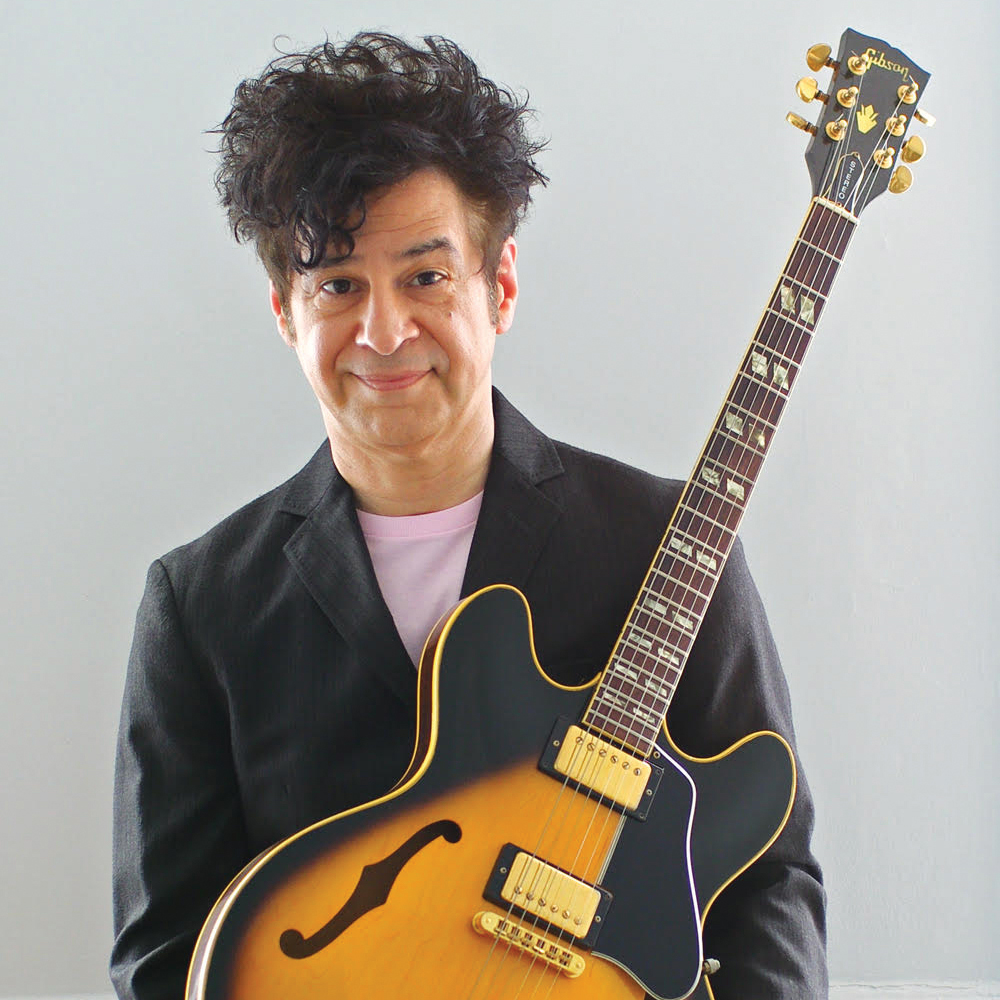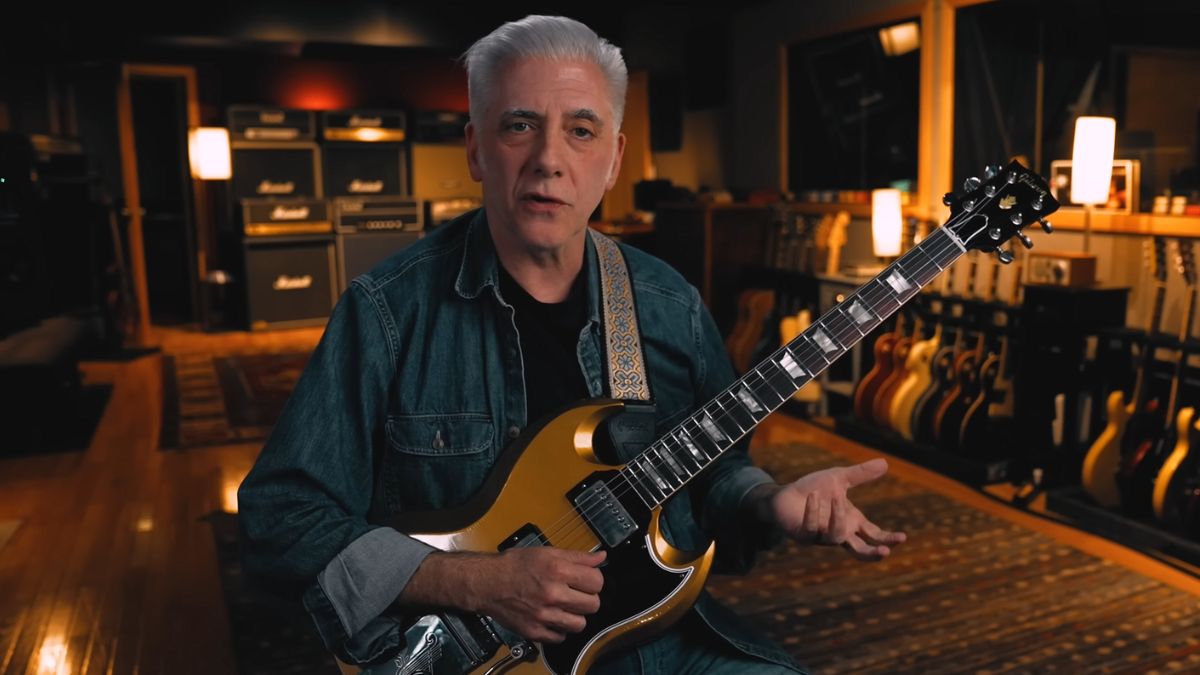Paul Gilbert: “Why My String Gauges Are Changing All the Time”
Paul Gilbert on why he's constantly changing up his string gauges.
Awhile back, guitar virtuoso Paul Gilbert appeared in an episode of Ernie Ball’s String Theory series to talk about his love of guitar, influences and choice of strings and gauges.
“I thought that the bottle was really beautiful, so I decided to make a guitar inspired by it. We used the bottle caps as control knobs and incorporated the same graphic designs throughout. It’s one of my few guitars that doesn’t have a scratch on it. It’s so beautiful that I’m scared to take it on the road. If I scratched it I think that I would cry.”
Below, we’ve called out four things we learned from Gilbert’s String Theory episode. But be sure to watch the entire video, shown at bottom, to hear plenty of his shredding.
1. Gilbert is constantly changing his string gauges. (:43)
“My gauges are changing all the time, because it really depends on the state of my calluses,” Gilbert explains. “If I’m a couple of weeks into a tour and I’ve got some good calluses, if I’ve done a couple sweaty gigs in a row and my calluses have been destroyed, I’ll go as light as .008s, sometimes I’ll got as heavy as .011s. And not only gauge, but for acoustic guitar sometimes i really like to use a plain G.”
2. When it comes to guitar, it’s all about bending strings. (1:32)
“It’s so satisfying as a guitar player to play stuff that’s related to the blues,” he says. “Because if you’re not bending, you might as well be a harpsichord player. With bending you get to pretend you’re a vocalist, even if you’ve got a lousy voice.”
All the latest guitar news, interviews, lessons, reviews, deals and more, direct to your inbox!
3. His music is as much influenced by Seventies pop piano songs as it is by riff rock. (2:10)
“When it comes to songwriting, I grew up in the Seventies listening to AM radio,” Gilbert says. “So I’ve all these pop songs running through my head from Paul McCartney and Elton John, and a lot of stuff that was written on piano. And that’s really different from the riff rock that I was into as a guitar player. As a writer a lot of times I’m really sort of juggling those two things that I love.”
4. He believes it’s important for guitarists to hear the guitar rather than look at it. (3:10)
“As human beings we’re visual creatures, and it’s so easy to play the guitar by looking at it,” he says. “It’s a real challenge to go from that visual way of perceiving the guitar to getting back to that pure sound connecting to the instrument. For guitar players it’s such a beautiful way to take what you hear in your head and make it real.”
Christopher Scapelliti is editor-in-chief of Guitar Player magazine, the world’s longest-running guitar magazine, founded in 1967. In his extensive career, he has authored in-depth interviews with such guitarists as Pete Townshend, Slash, Billy Corgan, Jack White, Elvis Costello and Todd Rundgren, and audio professionals including Beatles engineers Geoff Emerick and Ken Scott. He is the co-author of Guitar Aficionado: The Collections: The Most Famous, Rare, and Valuable Guitars in the World, a founding editor of Guitar Aficionado magazine, and a former editor with Guitar World, Guitar for the Practicing Musician and Maximum Guitar. Apart from guitars, he maintains a collection of more than 30 vintage analog synthesizers.

